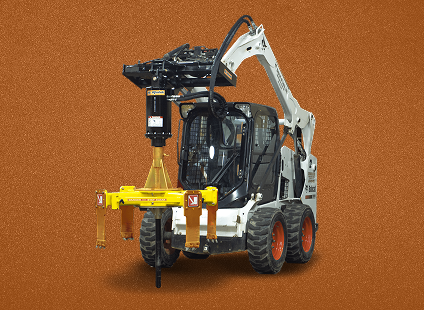Cities are living, breathing things. Buildings go up, roads wear down, and eventually, everything needs a little attention. Sometimes that means pulling down an old structure that’s past its prime, and other times it means fixing up the underground systems that keep neighborhoods running. At first glance, demolition and restoration sound like totally different worlds. One is about clearing things out, and the other is about making things last. But if you look closer, they both share the same heartbeat: working smarter, not harder. From eco-friendly demolition practices to long-lasting manhole restoration in urban areas, the goal is the same—fast, safe, and sustainable work that keeps life moving forward.
The Challenges Nobody Talks About
If you’ve ever seen demolition in action, it’s easy to imagine it’s all about heavy machines and brute force. In reality, there’s a lot more strategy than chaos. Houses and commercial buildings aren’t just bricks and wood. They’re layered with wiring, plumbing, and sometimes even hazardous materials that have to be handled with care. A good demolition crew doesn’t just smash and grab; they’re like surgeons, carefully deciding what can be salvaged, what needs to be recycled, and what has to go to disposal.
On the other side, restoration teams are facing their own set of challenges. Repairing underground systems like manholes or utility access points isn’t just about patching up cracks. It’s about making sure the repair is strong enough to last for decades, all while minimizing traffic disruptions and community headaches. The stakes are high in both worlds, and that’s why skill, planning, and modern tools matter so much.
Why Demolition is Smarter Now
Think about demolition fifty years ago—wrecking balls, dust clouds, and giant piles of waste headed straight for landfills. That image couldn’t be further from today’s reality. These days, demolition is about efficiency and respect for the environment. Crews take the time to separate materials so wood, metal, and concrete can be recycled or reused. What used to be considered garbage is often the building block of the next project.
It’s also about safety. Instead of loud, chaotic destruction, demolition now leans on quieter, more precise equipment that reduces risks to both workers and nearby properties. It’s a cleaner, safer process that sets the stage for whatever comes next. That’s exactly what you’ll find with companies like http://rosecityhomedemo.com/, which make professionalism, safety, and eco-responsibility the core of what they do.
Restoration: The Other Half of the Story
Demolition clears the canvas, but restoration keeps the existing canvas alive. In cities, tearing everything out and starting over isn’t always an option. Manholes, pipes, and underground systems are too vital to disrupt without serious consequences. That’s why restoration has become just as important as demolition.
Using advanced cutting and sealing techniques, restoration specialists can bring failing infrastructure back to life. It’s cost-effective, less wasteful, and faster than building from scratch. More importantly, it keeps communities moving without long road closures or massive detours. In a way, restoration is the ultimate example of working smarter: fixing what’s broken while protecting what still works.
The Tech That’s Changing the Game
One of the coolest parts of modern demolition and restoration is how much technology has reshaped both industries. Demolition crews now use machinery that keeps noise and vibration levels down, protecting nearby homes and businesses. Restoration teams rely on circular cutting tools and high-precision equipment to make cleaner, safer repairs underground.
And it’s not just about convenience. Technology improves safety, too. Sensors can now detect shifts in structures, alerting crews before something goes wrong. The combination of human expertise and advanced tools means projects finish faster, safer, and often at a lower cost. It’s proof that the old ways of brute force are being replaced by smarter, more thoughtful solutions.
Why Sustainability Matters More Than Ever
Neither demolition nor restoration can ignore their environmental footprint anymore. Demolition teams are expected to recycle and salvage as much as possible, while restoration crews are praised for reducing waste by repairing instead of replacing. Clients care about these things, and rightly so. Choosing eco-friendly options doesn’t just feel good; it saves money and sets a higher standard for the industry.
Think of it this way: every ton of concrete recycled, every piece of metal salvaged, and every system restored instead of scrapped keeps money in budgets and waste out of landfills. Sustainability isn’t just a buzzword—it’s how these industries stay competitive and relevant in today’s world.
Keeping the Disruption to a Minimum
If there’s one thing everyone can agree on, it’s that no one likes long delays, noisy work, or blocked streets. Whether it’s a demolition site or a road repair, people want it done quickly and cleanly. That’s why professional crews plan projects down to the hour, phasing work in ways that reduce downtime.
Restoration is no different. Closing a street or access point in a busy city can cause chaos, so teams plan repairs around traffic patterns, weather, and even community events. At the end of the day, it’s not just about getting the work done—it’s about making sure the community can keep moving while it happens.
Wrapping It Up
When you take a step back, demolition and restoration are two sides of the same coin. Both are about creating safer, stronger, and more sustainable environments. Both depend on precision, planning, and a deep respect for the communities they serve. And both are proving that the future of construction is about being smarter, not just stronger.
From recycling materials in residential demolitions to using advanced tools for underground repairs, the industries are evolving in ways that make cities cleaner, safer, and more resilient. And as urban areas continue to grow, the demand for thoughtful demolition and dependable restoration will only get stronger. These aren’t just technical services; they’re the building blocks of smarter, more sustainable cities.
